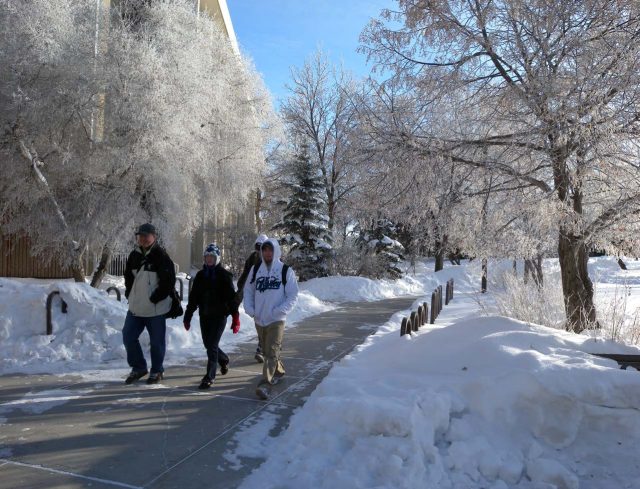Movement Framework

The Movement Framework supports the evolution of Brandon University in becoming an accessible, multi-modal place that puts the pedestrian first. It is designed to increase connectivity with the surrounding community and create a walkable environment for all users. By accommodating multiple modes of movement and prioritizing the pedestrian, car dependency will be lowered at Brandon University. A clear hierarchy and function for streets is presented in the Movement Framework with these objectives in mind.
Gateways & Wayfinding
Gateways are an essential part of a wayfinding strategy. They need to visibly stand out and be placed in strategic locations to draw visitors into the Campus.
Vehicles & Street Network
BU benefits from being well integrated into its urban fabric by means of a grid network of north-south and east-west streets. This allows the Campus to be well accessed by all modes of transportation from every direction.
Pedestrian Circulation
The majority of the Campus is a car-free zone, with the exception of some areas for pedestrian drop-off and the servicing of buildings. Pedestrian circulation must be of highest priority.
Cycling Circulation
As Brandon University moves towards a multi-modal movement strategy, cycling will become an increasingly dominant mode of transportation.
Transit
BU currently benefits from a well-connected campus, with five public transit stop locations around its perimeter that connect to the rest of the city.
Parking
Surface parking on campus, and particularly along 20th Street will be phased out in order to accommodate future growth.
TDM
Transportation Demand Management (TDM) is a series of measures and strategies to decrease vehicular use and increase the proportion of trips made by transit, walking, and cycling.
